We are in the peak period for retail, and as such it’s a prime time for retailers to be acquiring customers at high volumes. That’s why it’s particularly important to have a post-purchase strategy in place, because the first step towards customer retention is acquisition, so the communications sent after purchasing are essential.
The journey to creating a truly incredible customer experience starts here. With that in mind, retailers have a number of options at their disposal, which they can deploy to turn an initial purchase into a long-term customer.
Post-purchase emails go beyond simply the first marketing email you send after a purchase – for this purpose we’ll ignore the more transactional confirmation and shipping emails, and take those as read. What we mean by them are emails that take into consideration that there has been a purchase. This means that rather than a more generic newsletter, or even a highly targeted piece of marketing, these are emails that refer back to the purchase in some way. Let’s take a look.
We start with quite a simple example, but one which a number of retailers choose not to do – taking the opportunity after an initial purchase to thank customers. Your customers have chosen to make a purchase with you, so in many ways the least you can do is thank them. While you are at it, this is a great opportunity to remind customers of your brand values and what they have bought into. If your brand supports good causes, or has sustainable credentials then this is a fantastic chance to tell them.
In this example, Not On The High Street thank the customer for their purchase, and remind them that by making a purchase they have supported a network of small businesses. This is intended to make the customer feel good about their purchase and to encourage them to come back again in future.
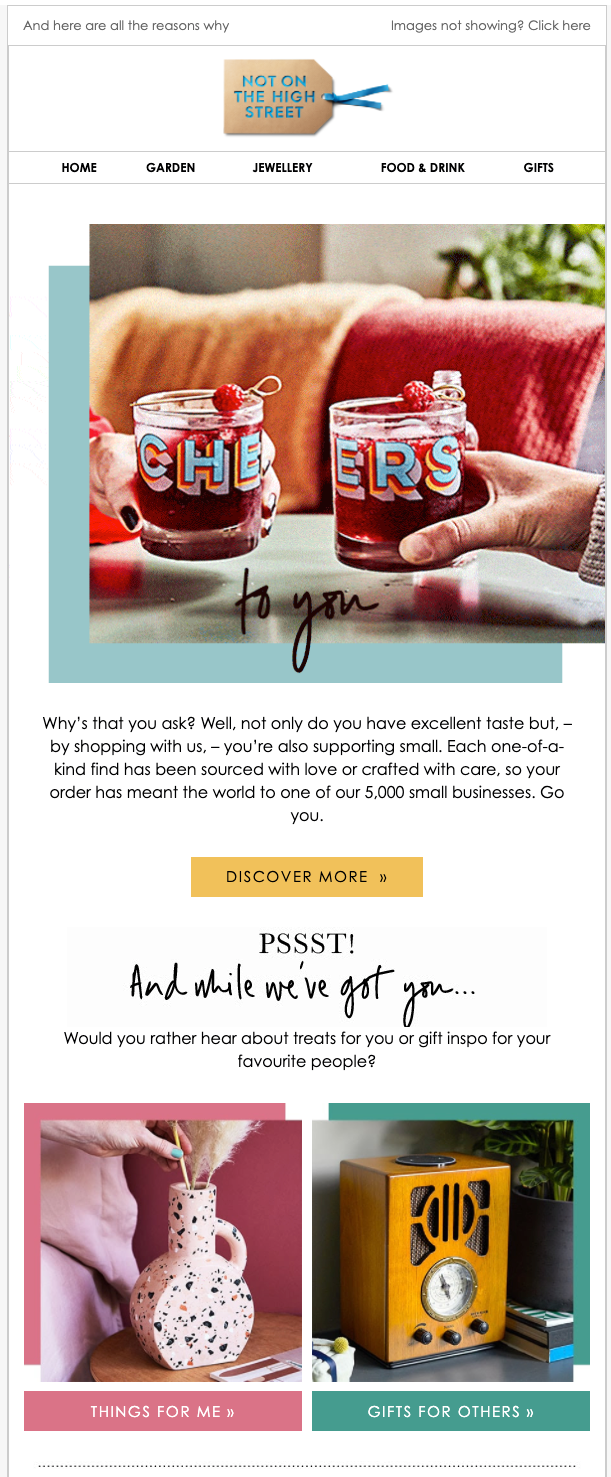
Baby brand Sisi & Seb take the opportunity to issue a thank you message that re-affirms its brand identity, while adding a discount for the customer’s next purchase. with a discount for the next purchase.
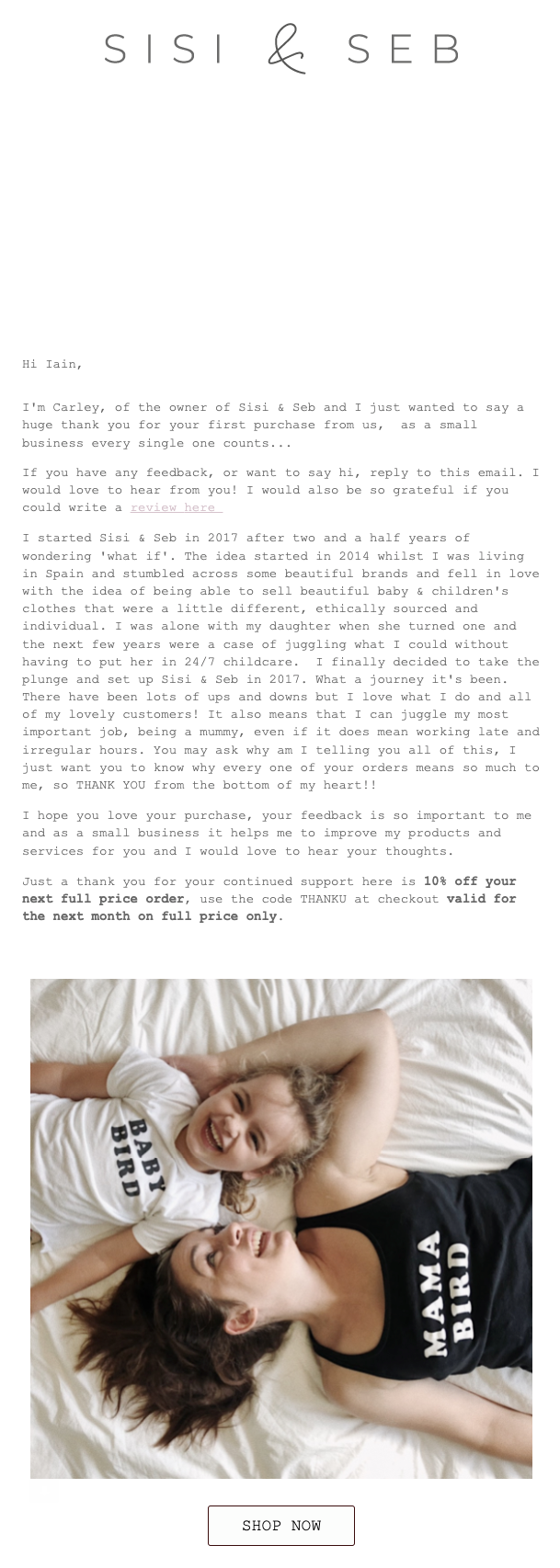
There is more than one customer journey, and there is more than one way to get newsletter subscriptions. For some retailers, subscribing to a newsletter is one of the first actions a potential customer makes. While others make the choice to target a highly-engaged group: the newly acquired customers.
This is something Gap did. After making a purchase, customers receive a reminder to confirm their email address and get a discount code for in-store and online. This can be an effective tactic to ensure a high level of engagement from the newsletter audience, by ensuring that they are truly happy with their experience so far, and preventing email lists from being filled with disengaged users. If that’s a problem for you, perhaps you should try this out.
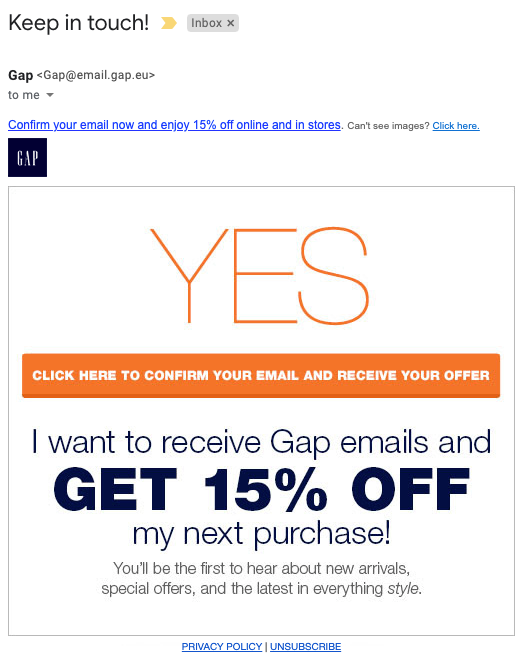
Making sure that your customers know everything they need to know about the product they’ve just bought is a fundamental part of customer satisfaction. How often have you lost or thrown away the instructions, or the guide that came with the product you ordered? Sending an email with an aftercare guide, or a digital version of the information a customer needs is a great way of ensuring they have the best experience possible.
After purchasing some shirts from the Savile Row Company, customers may receive this email guide explaining how to look after the shirts and ensure that they are as crisp and pristine as if they were new. The email is also styled as a personal thank you note from the MD of the company which adds a classy touch to the transactions.
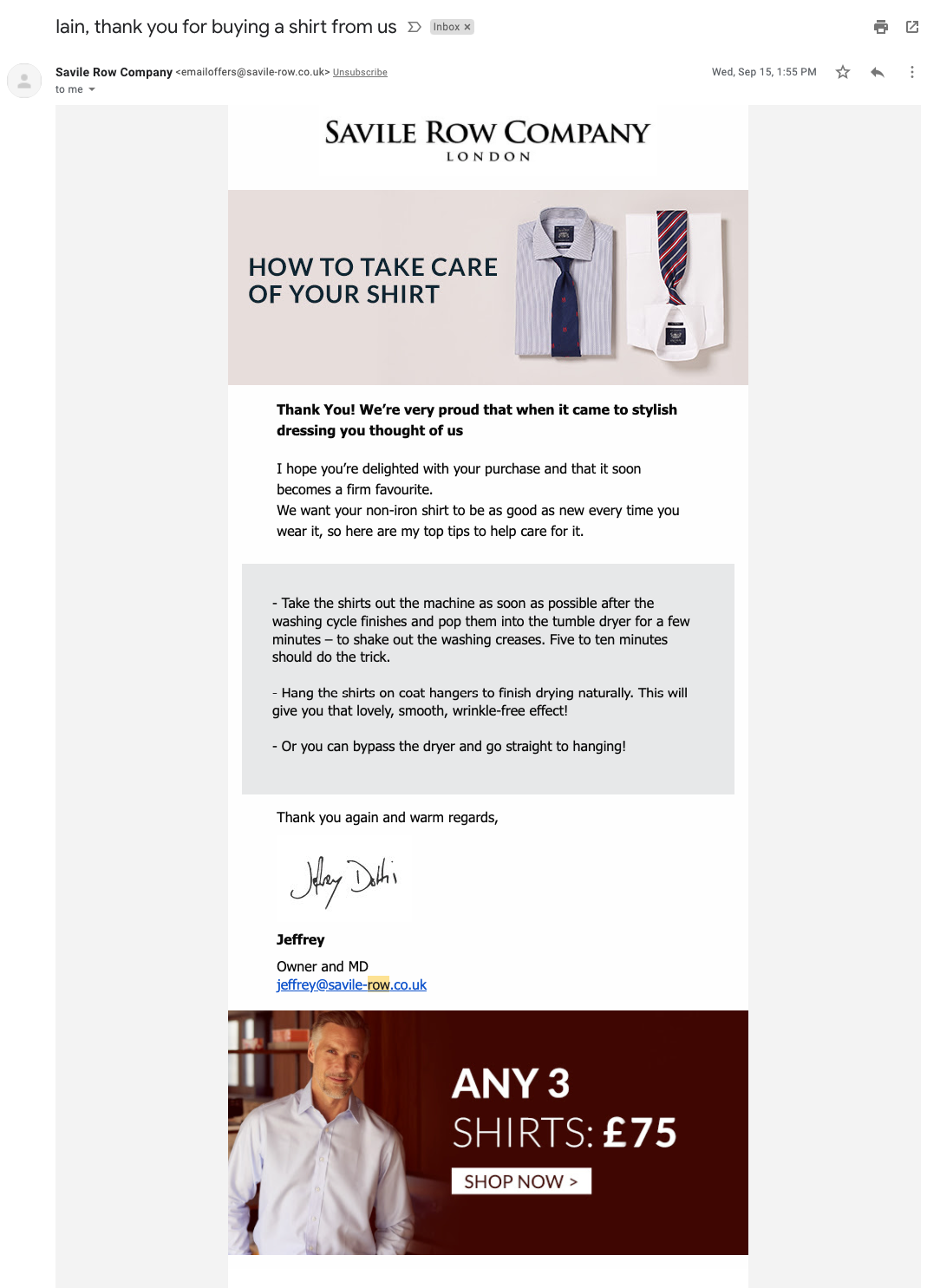
Trust and reputation are essential to building a successful brand, and a large part of that is gathering reviews and feedback from your customers. This is obviously something that should only be done after a purchase, but one of the key decisions you need to make is how to time your request for a review. If you ask too soon, there’s a good chance that customers may not have used the product yet. If you ask too late, they may have forgotten about the buying process.
DIY and tools brand Screwfix offer the chance to win a £100 voucher for anyone who does leave a review of the products they bought. This is timed to be sent between 3 and 7 days after the purchase was made. Hopefully by this time, the customer has had a chance to use the product(s).
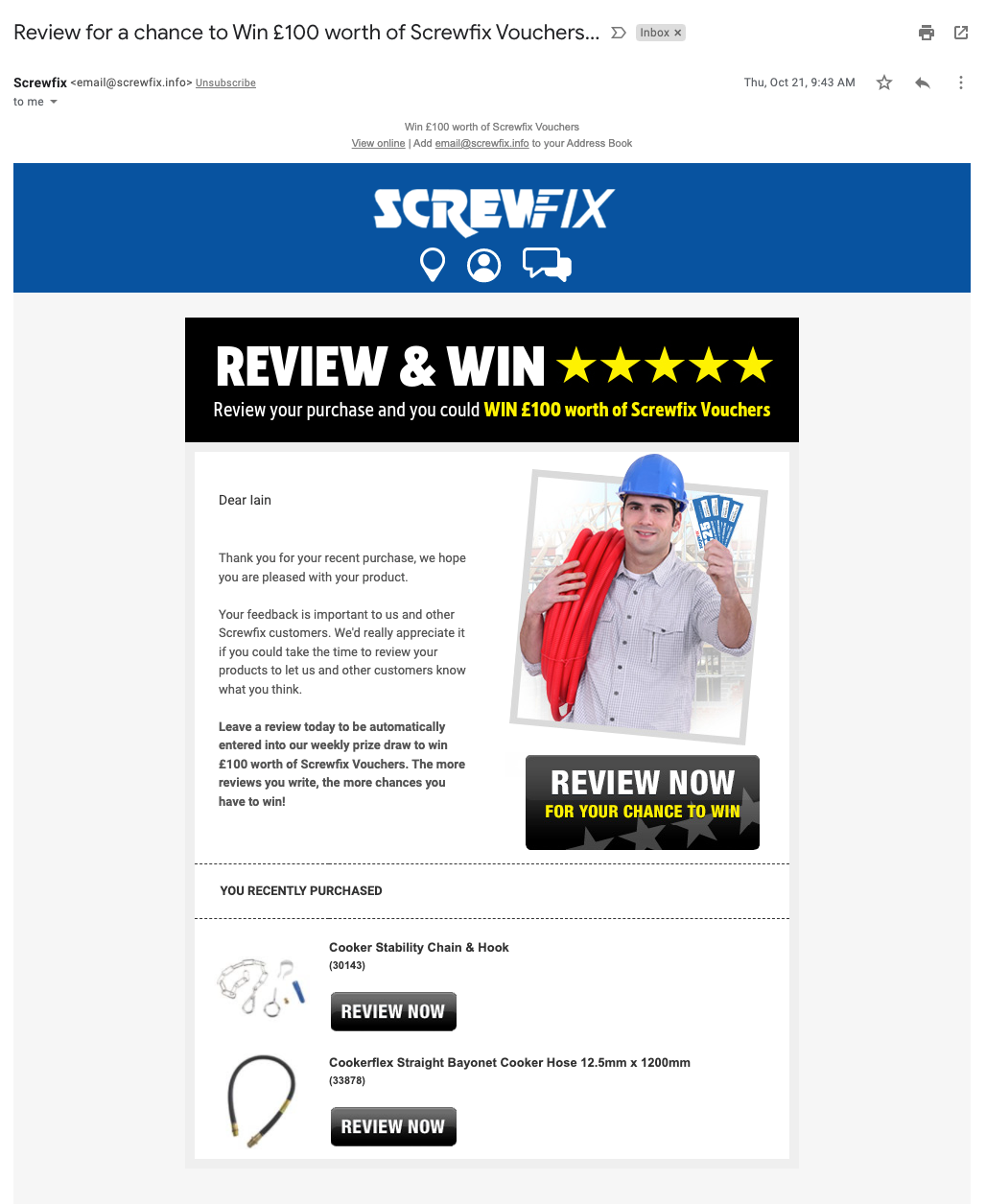
Similarly Pact Coffee know that as a coffee subscription service there is a good chance that customers will start drinking the coffee soon after receiving it, and so they can time this for around a week after the customer receives the item.
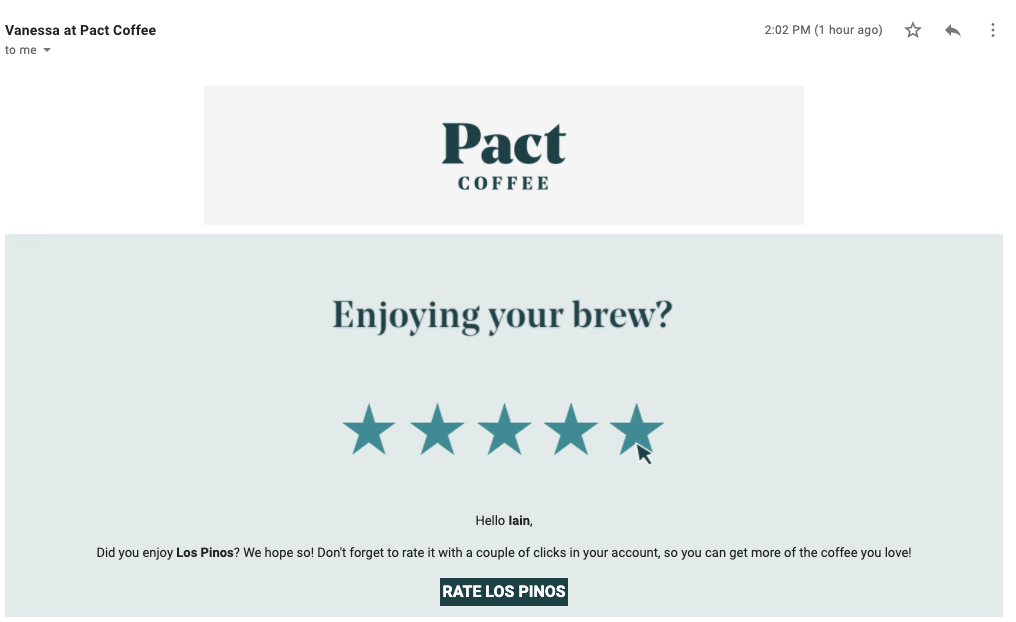
If you’ve delighted your new customers enough to get good reviews from them, then it is also a great opportunity to capitalise on this by getting them to refer their friends. In our recent survey of US fashion consumers, the number one way people found out about new brands was via friends and family. So if you can give customers a referral code, this can be a great opportunity to turn one new customer into two or three.
This is exactly what Patch have done by working with a referral business to generate a personalized discount code that people can give to their friends and family.
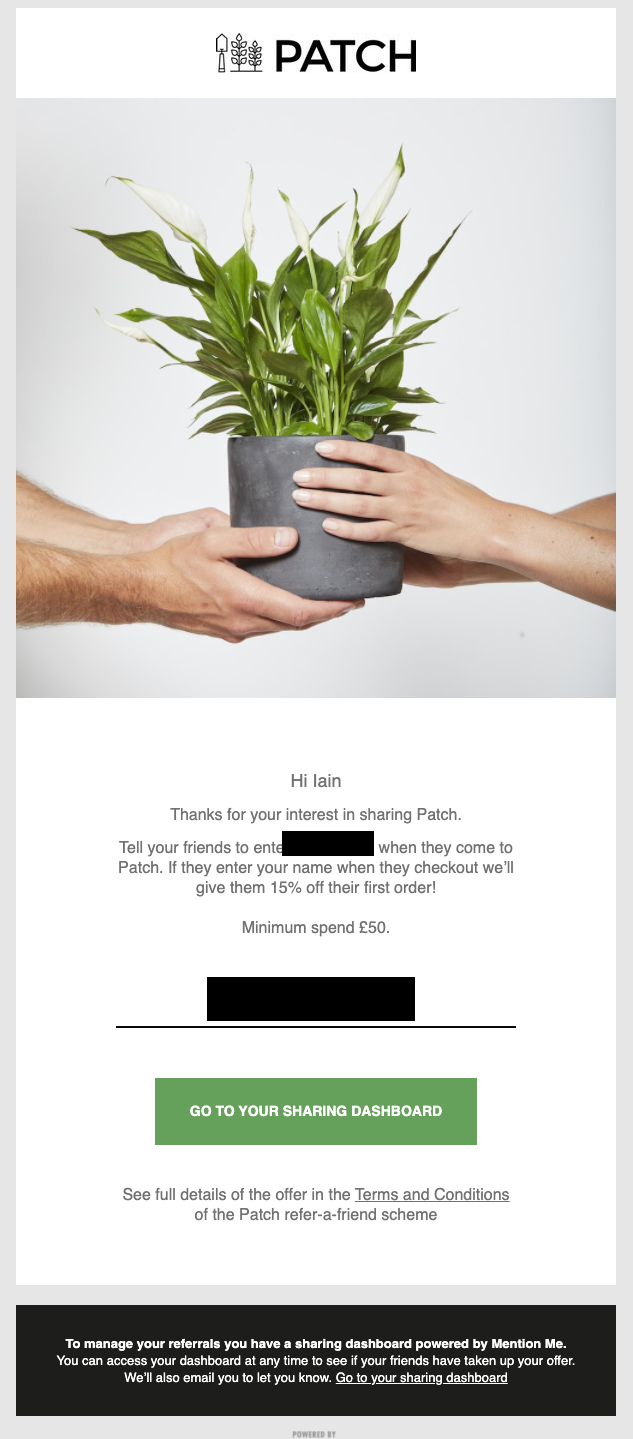
A post-purchase email is a great opportunity to recommend complementary products to your customers. Looking at your customers’ purchase history – or better yet, using a recommendations engine – you can start to target customers with products that go perfectly with what they have just purchased.
In this example, Wickes has identified that the customer has purchased some items to do some painting at home. Painting requires brushes, tape, sanding materials and a whole bunch of other stuff, and so Wickes combined a guide to painting, along with recommended products for this customer to buy for their home makeover project.
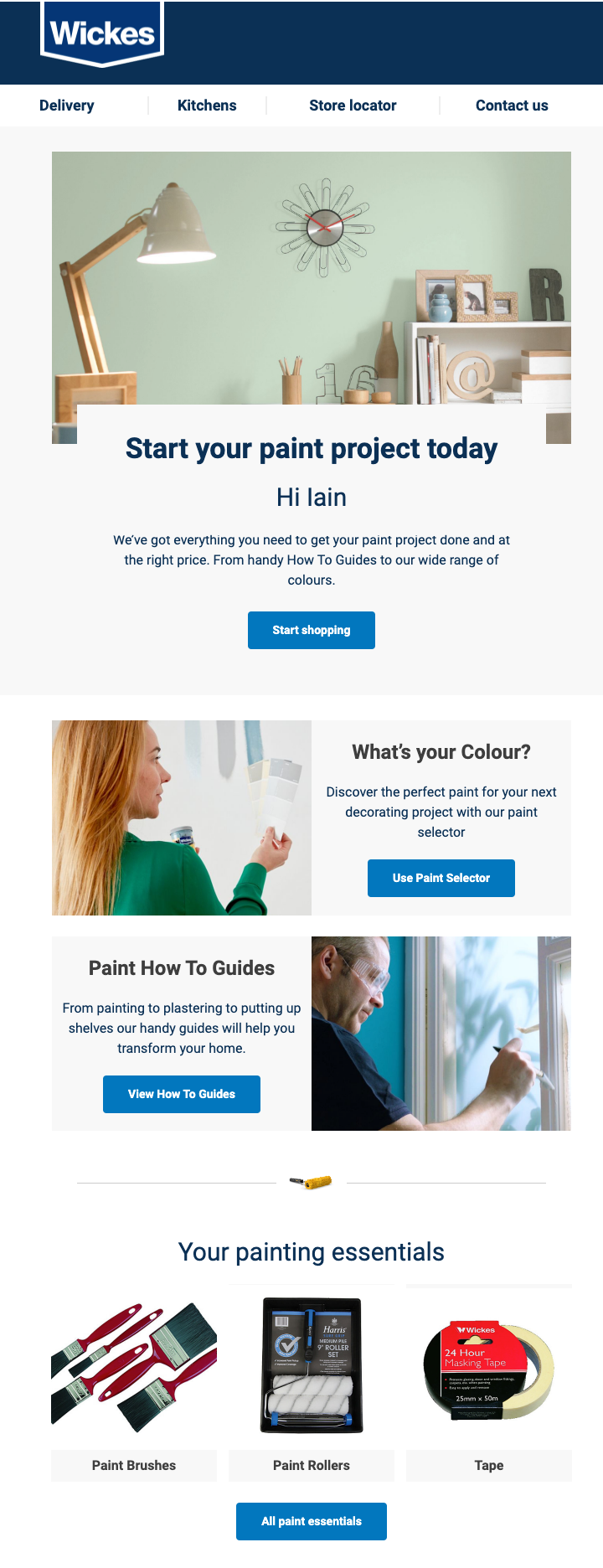
It’s always possible that even with the best post-purchase emails and strategies in place that customers just never come back to you, or otherwise are completely disengaged in your emails. That’s OK, that’s life. But if you are still hopeful that you will get a repeat purchase from this customer after an extended period away, then you can try a win-back campaign. Referencing how long it has been, indicating that this might be the last email they get from you, and offering an incentive to get back on site and purchase are all key ingredients of a good win-back campaign.
If this doesn’t have the intended effect, and your customer doesn’t engage then maybe it’s time to end their journey and take them off your mailing lists, so you aren’t clogging up your lists with recipients who have shown they don’t want your emails.
In this example, Currys uses a subject line of “Was it something we said?” and reference how long it has been since the customer visited the store and bought anything. As a way of tempting the customer back, they are offered £30 off a new purchase. As a possibly final communication between brand and customer, it’s a pretty good effort.
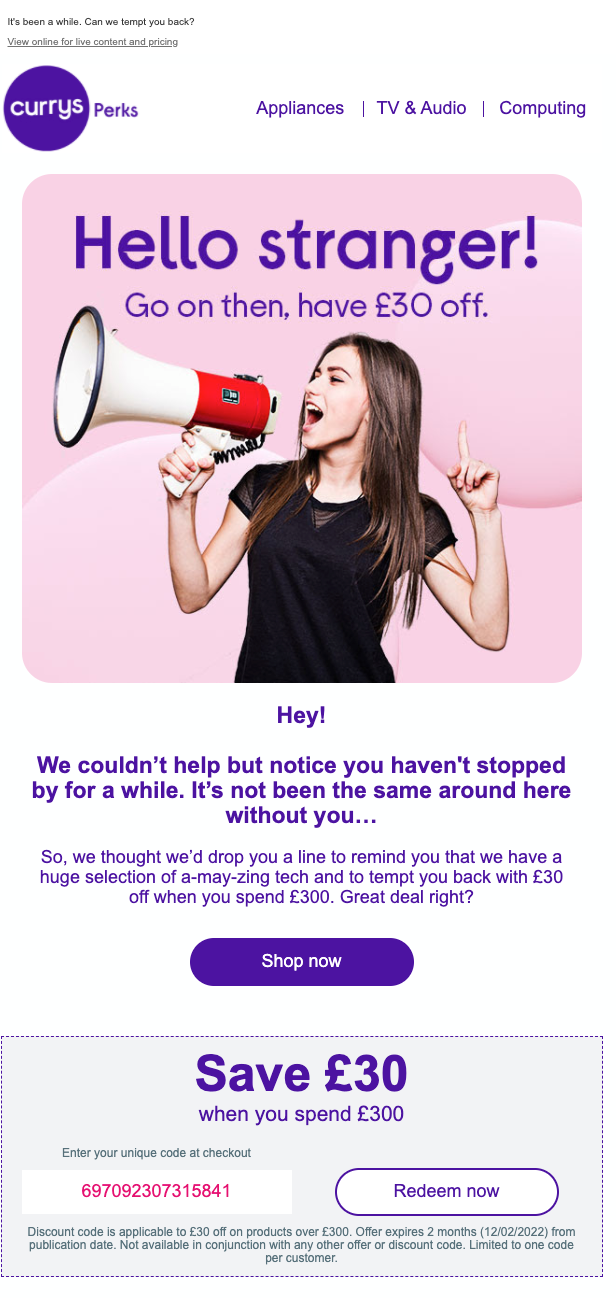
A huge part of personalized customer experiences is the context in which communications from brands happen. As such, post-purchase emails are an essential way of demonstrating personalization. These emails or texts are going to customers because they bought something, and that is a central reason why the messages are being sent. Getting them right is a cornerstone of a great customer retention strategy.
To find out more about how you can use customer retention tactics effectively, download our guide to keeping customers post-Black Friday.
Ometria is committed to protecting and respecting your privacy, and we’ll only use your personal information to administer your account and to provide the products and services you requested from us. You may unsubscribe from these communications at any time. For information on how to unsubscribe, as well as our privacy practices and commitment to protecting your privacy, please review our Privacy Policy.
Take the first step toward smarter customer marketing